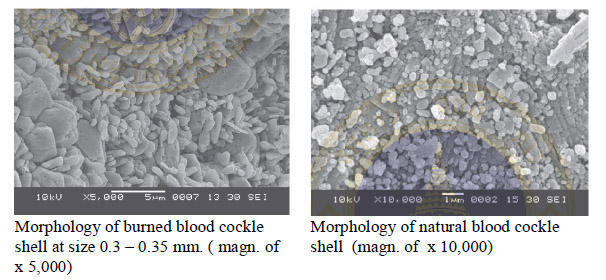Blood Cockle Shell: an Agro-waste for N and P Removal of Shrimp Farm Effluent
Main Article Content
Abstract
This research investigated the removal efficiency of burned (activated) blood cockle shells (BBCS) of the total nitrogen (N) and phosphorus (P) effluent from shrimp farms, in comparison with novel activated charcoal (AC) and natural (unactivated) blood cockle shell (grinding, NBCS). All shell types (BBCS, NBCS) performed well as adsorbents The removal efficiency varied with shell particle size and effluent flow rate. The shell particle size of BBCS at 0.85-2.0 millimeters had the highest removal efficiency of total N and P at 86.66% and 87.63%, respectively. The best flow rate of effluent for N and P removal efficiency through adsorbency were 300 ml/hour. Moreover, the equilibrium model study for adsorption isotherm of BBCS performed better fitted to the Langmuir model in nitrogen removal, and to both Langmuir & Freundlich model in phosphorus removal. Our findings indicated that the higher surface area and larger average pore size of the adsorbents as BBCS (Bunauer, Emmett and Teller method: BET) produced more N and P removal efficiency than the lower one as NBCS.
Article Details
Published articles are under the copyright of the Environment and Natural Resources Journal effective when the article is accepted for publication thus granting Environment and Natural Resources Journal all rights for the work so that both parties may be protected from the consequences of unauthorized use. Partially or totally publication of an article elsewhere is possible only after the consent from the editors.
